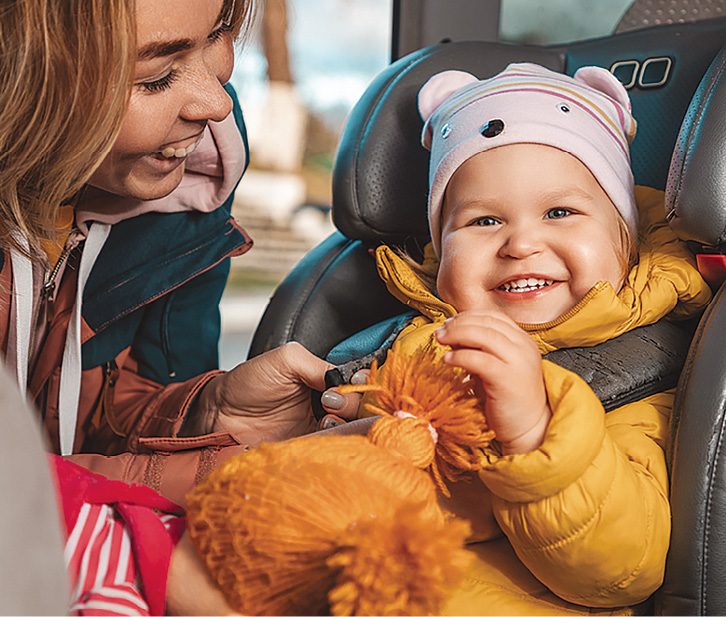In the U.S., the leading cause of death for children ages 3-14 is motor vehicle crashes. The right car seat, used in the right way, greatly increases your child’s chance of surviving a car crash, but frighteningly, almost half of all car seats are installed incorrectly.
Some car seats are held down using the seat belts, while some are held in place by a LATCH. LATCH stands for Lower Anchors and Tethers for Children. As long as they are used correctly, both LATCH systems and locked seat belts are equally safe, so use whichever one works best for your particular combination of seat and vehicle.
In general, the back seat is the safest place to ride for children younger than 13, and the safest section of the back seat is in the middle. Most crashes are front impact, and the back seat keeps children away from both the impact zone and from airbags that are designed to protect adults. However, if you get a better installation in the sides of the back seat, choose that. It’s more important that the car seat is installed correctly than it is to be in the middle of the back seat.
Winter car seat tips
Cold weather makes getting everyone situated in their car seats extra challenging. Here are tips for when the temperature drops:
1. Don’t buckle over bulky winter clothing. In a crash, puffy coats and snowsuits immediately flatten out from the force of the impact, leaving the straps too loose. Instead, dress your child in thinner, more fitted, layers, and then cover them with a blanket or jacket over the harness.
2. Make sure the harness is snug. If you can pinch the strap, then it needs to be tightened.
3. If possible, store car seats in the house. This keeps them warmer, and they won’t zap body heat when kids get buckled in.
After a crash
Car seats don’t automatically have to be replaced after a minor crash. A crash is a minor one if ALL the following apply:
• The vehicle was able to be driven away from the crash site.
• The vehicle door nearest the car seat was not damaged.
• None of the passengers in the vehicle sustained any injuries in the crash.
• If the vehicle has airbags, the airbags did not deploy during the crash; and
• There is no visible damage to the car seat.
• If it’s been in a moderate to severe crash, it’s time for a new seat, even if it appears to be fine.
What to know before you buy a car seat
1. Know your child: Keep track of their height and weight. This information, along with their age, influences when it’s time to go up to the next size car seat. This is also impacted by behavioral and/or health issues.
2. Know your store: Some will let you “try before you buy.” This is important, because not every car seat is a good match for all cars. Cushion angle or seat belt placement can make some seats incompatible. Always make sure the store will accept returns, in case the fit is wrong.
3. Know your car: In your car’s owner’s manual, find the section on child safety seats. Read it to familiarize yourself with its specific information on seat belts, LATCH, and seats.
Remember—car seats expire! They have tough lives: they’re made from plastics that degrade when exposed to extremes in temperature and sunshine. They get stuff spilled on them. They get banged around. Some seats will have an expiration date printed on them, but sometimes you’ll have to check the car seat manual and then do the math for yourself. Visit consumerreports.org to walk through an interactive decision tree that will help you determine if you can reuse a car seat or not.
This is a condensed version of Sawtooth Mountain Clinic’s “Topic of the Month” newsletter. To read and access source links, listen, or subscribe, visit: sawtoothmountainclinic.org.

